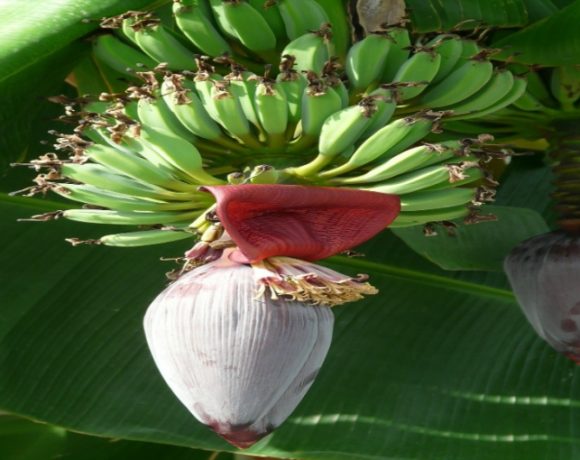Export Sectors Boost Antioquia’s Economy: Banco del la Republica

Colombia’s Banco de la Republica (BR, the state bank) found in a new study that Medellin and the surrounding Antioquia department are generally out-performing the national economy, especially in certain export sectors.
In its latest report comparing fourth-quarter (4Q) 2016 to 2015, BR concludes that “the economy of Antioquia in the fourth quarter [2016] exhibited some stability in labor market indicators and a downward trend in inflation.”
Among the various economic sectors, Antioquia saw a “slight increase in domestic trade and [relatively small] setbacks in industry, construction, mining of precious metals and tourism,” BR found.
Export Sectors
Antioquia exports in 4Q 2016 jumped 17.1% year-on-year, to US$1.2 billion – “ the best performance of the last 20 quarters,” BR’s report notes.
“The increase in value exported was mainly due to higher sales of gold, coffee, bananas, vehicles and processed foods. Meanwhile, quarter-on-quarter shrinkage continued in shipments of other major industrial products, such as apparel, plastics, iron and steel, paper and glass,” according to BR.
“As for gold, whose transactions reached US$1.17 billion, 2016 marked a turning point in a contractionary trend, since in the previous three years [gold exports] registered an average annual fall of 30%,” BR noted.
“The rebound in gold sales coincided with the global market outlook, whose demand was at its highest level since 2013, marked by purchases from the Exchange Traded Funds. On the contrary, a sharp decrease [in purchases] was observed in those made by central banks and the jewelry industry. In turn, the international price of the troy ounce had an increase close to 8%,” BR noted.
Meanwhile, Antioquia’s foreign exports of bananas hit US$662 million, up 18.6% year-on-year, BR noted. The principal destinations for bananas were (in order) Belgium, Italy, United Kingdom and United States.
As for Antioquian coffee exports, volume rose 6.6% year-on-year, although the value slipped 3.5%, to US$362 million, BR noted. Principal buyers of Antioquian coffee came from the United States, Canada, Japan and Germany.
As for cut-flower exports, Antioquia’s flower producers saw a 3.4% hike in the value of sales, to US$276 million, BR reported.
Meanwhile, Antioquia’s vehicle and auto-parts exports rose 13.7% year-on-year, to US$348 million, BR noted.
“Higher exports to Mexico (US$233 million) and Ecuador (US$42 million) offset the falls of US$25 million to Chile and Peru,” according to BR.
But on the down side of exports, “the sale of clothing continued a negative path started four years ago with a decrease of 15.1% (totaling US$250 million). The markets with the least deterioration were the United States and Ecuador, and to a lesser extent Mexico and Peru,” BR noted.
Meanwhile, Antioquia’s plastic-products exports fell 30.2% year-on-year, to US$134 million, while processed food exports dipped 2.2%, to US$161 million. Iron and steel export values fell 15% year-on-year, while paper-product export receipts dipped 26.1%, according to the report.
Among the various destination countries for Antioquian exports, declines were especially notable in Ecuador, “as a result of the closure of energy transactions since the second quarter and the notable reduction in shipments of products associated with the chemical industry and textiles,” BR noted.
“Trade with Peru showed a slight deterioration, and exchange with Venezuela, the main buyer of industrial goods in 2007, completed two consecutive periods of annual declines above 50%,” according to BR.
Remittances from Overseas
Meanwhile, U.S. dollar-denominated monetary remittances to Antioquia mainly from family members working overseas declined 1.5% in 4Q 2015, to US$215.8 million, and also dipped 1.6% for full-year 2016, to US$831 million, BR reported.
U.S. dollar-denominated remittances from the United Kingdom to Antioquia dropped 13% year-on-year, but jumped 51.7% from Chile, making Chilean remittances second only to the United States. U.S. remittances accounted for 60.7% of all remittances to Antioquia, while Spain accounted for another 12.3% of the global total, BR found.
Despite the decline in U.S. dollar-denominated remittances, the recent surge in the value of the U.S. dollar versus the Colombia peso meant that Antioquians enjoyed an 8.5% year-on-year rise in the local value of such remittances.
These transfers of money from overseas to Antioquia “positively impacted the income of families and the commercial and financial sectors” and also boosted the real estate sector, “where some of these [foreign transfer] resources are usually directed,” BR concluded.
Macroeconomic Picture
In Antioquia, “household consumption showed [relatively] weak dynamics; retail sales reported a slowdown compared to increases seen in the previous two years. Fewer vehicles were sold, but the annual rate of contraction was lower than in 2015,” BR found.
“The consumer confidence index continued to be negative and imports of consumer goods continued to fall at double-digit rates. [However], household spending evidenced good behavior at the end of [2016], both in terms of consumption and in demand for mortgages.
“Indicators for assessing gross capital formation suggested a [relatively] low evolution in 2016. Imports of industrial machinery and transportation equipment were reduced; a steep decline occurred in deliveries of concrete for civil works; and a significant reduction was seen in the commercialization of heavy vehicles. Commercial credit also declined in the local financial system.”
On the positive side, “in mining, recovery in gold exploitation was a highlight, especially during the first quarter” of 2016, BR found.
“On the other hand, in the agricultural sector, contractions were observed in the slaughtering of cattle and in the production of chicken meat. However, slaughter of pigs, egg production, food supplies and credits directed to the [agricultural producers] increased.
“In the services sector, there was a slight increase in hotel occupancy and, in the area of transportation, air cargo and airline passenger [growth] were outstanding,” BR found.
In fourth-quarter (4Q) 2016, wholesale delivery of fresh produce to Medellin jumped 16.1% year-on-year, to 254,000 tonnes, although much of that supply is subsequently re-shipped to other departments in Colombia, BR noted.
Mining Highlights
According to the Colombian Mining Information System (Simco), gold production in Antioquia during 4Q 2016 reached 6,403 kilograms, down 15.7% year-on-year, but rose 7.4% for full-year 2016 versus full-year 2015, BR found.
Antioquia accounts for 41% of all Colombian gold production, followed by Chocó (23.5%), Nariño (15.0%) and Bolivar (6.6%), BR noted.
Antioquian municipalities with the highest share of national gold production and respective growth rates were El Bagre (30.7% and 7.4%), Zaragoza (13.0% and -15.9%), Remedios (10.7% % and 27.5%) and Segovia (10.6% and -23.1%), BR found.
“As with gold, the main silver extraction areas were concentrated in the municipalities of Bajo Cauca and Northeast of [Antioquia], with Segovia, Remedios, Zaragoza and El Bagre being the most significant,” BR found.
Industrial Sector
As for industrial production, 4Q 2016 output in metro Medellin dipped 1.6% year-on-year, BR found.
“The most significant changes were in textiles (-15.5%), basic chemicals (-9.6%), which declined for the sixth consecutive [quarter]; iron and cast iron (-7.7%),” according to BR.
“On the other hand, the best performers were baked goods (up 9.8%), other chemical products (8.2%), and paper and its products (7.0%),” BR found.
As for Antioquian industrial sales in 4Q 2016, 10 of 14 industrial groups saw year-on-year dips, including plastics (-8.1%), meat products (-7.1%) and iron and smelting (-4.5% %). Among industrial groups showing sales increases, beverages stood out (15.4%), and to a lesser extent paper and paper products (6.8%), BR found.
On the other hand, BR also cited figures from the latest annual Joint Industrial Opinion Survey conducted by the Association of Industrialists of Colombia (Andi), which show that Antioquia’s manufacturers boosted production by 1.6% year-on-year in 2016, with actual sales also rising 1.3% year-on-year.
In December 2016, Antioquia’s installed manufacturing capacity utilization stood at 81.0%, “which is higher than the historical average of the last seven years, at 76.3%,” according to BR.
However, at year-end 2016, “the business climate, as well as the demand indicators (order levels and inventories), reported a downward trend. Finally, in the opinion of the industrialists, the main problems they faced were the exchange rate, the [relatively weak] lack of demand and the cost and supply of raw materials,” BR noted.
Construction Sector
Citing figures from DANE (Colombia’s economic statistical agency), grey-cement shipments to Antioquia grew by 2.3% year-on-year in 4Q 2016, with Antioquia leading all other departments in Colombia for national share of grey-cement demand. However, the national truckers’ strike in early 2016 reduced cement shipping for full-year 2016, BR noted.
DANE figures also show that the total area approved for building permits in Antioquia contracted 16% year-on-year in 4Q 2016. Residential building permits accounted for 70% of all such permits, BR noted.
As for Antioquia’s new-home sales, the Colombian Chamber of Construction (Camacol) reported a total of 5,622 units sold in 4Q 2016, down 9.3% year-on-year, BR noted.
Retail Trade
Citing preliminary figures from DANE’s Monthly Retail Survey (EMCM), retail sales in Medellín rose 4.9% year-on-year in 4Q 2016. But if fuel sales were excluded, then Antioquia’s total retail sales in 4Q 2016 slipped by 0.3% year-on-year.
For full-year 2016, Medellin’s retail sales grew 2.4% year-on-year, but if fuel sales were excluded, then full-year retail sales dipped 0.4% year-on-year, according to BR.
The retail sectors with the best results included vehicles, textiles, bookstores, tires, machinery, services, food, tourism and spare parts. As for wholesalers, the best-performing sectors included construction materials, machinery, spare parts, footwear, chemicals and food, BR found.
“In December [2016], among the wholesalers, the best performance was in construction materials, ranch supplies, footwear, textiles, clothing and food. In the retail chain, the best performance was in textiles, appliances, spare parts, furniture, pottery, vehicles and fuels,” BR found.
Tourism
Citing data from the Situr Tourist Indicators System, BR found that average hotel occupancy in Medellín in 4Q 2016 reached 65.5%, down 3.8% year-on-year, “partly due to the lag of the national economy and [negative] expectations from the tax reform,” along with growth in the number of hotels and hotel rooms.
Hotels in the El Poblado neighborhood exhibited the highest occupancy rate (73.6%), while hotels in the Laureles-Estadio-Belén area saw a 55.6% occupancy rate, BR found.
While 4Q 2016 foreign visitor arrivals to Medellin dipped 6.6% year-on-year, the full-year 2016 hotel occupancy rates rose 2.5% year-on-year, BR noted. “By nationality, the majority of visitors were from the United States, Panama, Mexico and Venezuela,” BR found.
Financial Sector
Meanwhile, local bank deposits grew 3.1% year-on-year in 4Q 2016, down from the more-robust year-on-year growth rates seen in 2015 and 2014. This result was “consistent with the slowdown of the [Colombian] economy” as well as “lower demand for foreign currency credit because of the depreciation of the [Colombia] peso,” BR noted.
















